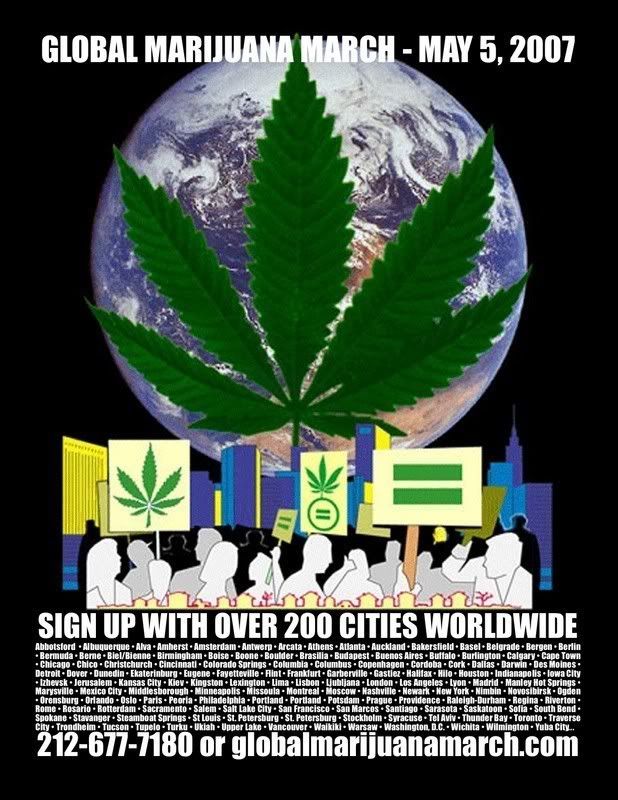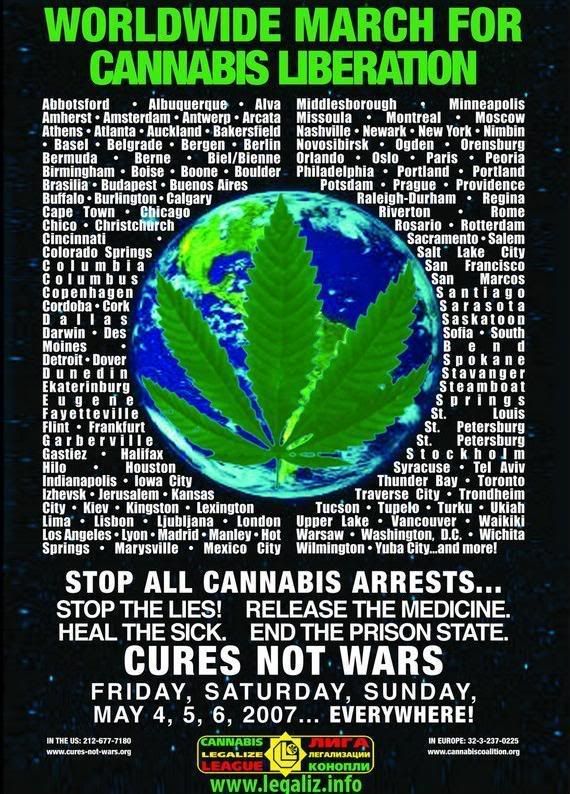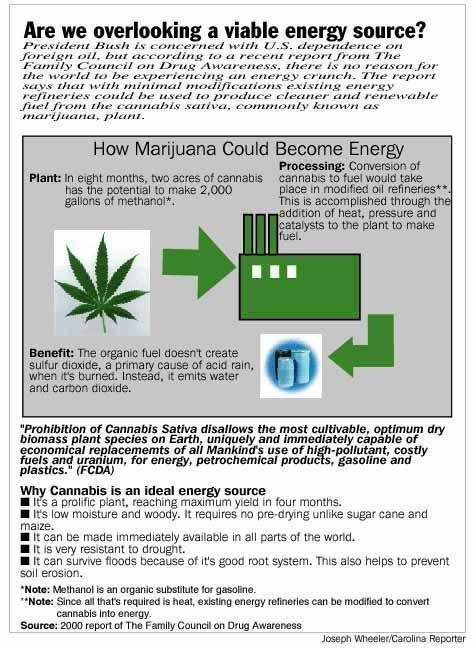Will a New Study Force Changes in Drug Law?
By Bruce Mirken, AlterNet
Posted on March 15, 2007, Printed on May 18, 2007
http://www.alternet.org/story/49159/
On March 8, a high-powered British commission recommended tossing that country's law on illegal drugs onto the scrap heap and starting over again. Given that the U.S. Controlled Substances Act parallels the British Misuse of Drugs Act in important ways, the suggestion deserves attention in America as well.
Indeed, it would be a fine start if Americans could simply begin the sort of rational, thoughtful debate on drug policy that the British seem to be having. If we could manage such a thing, we might start changing illogical and unscientific laws that now lead to more U.S. arrests for marijuana possession than for all violent crimes combined.
The RSA Commission on Illegal Drugs, Communities and Public Policy, was convened by the Royal Society for the Encouragement of Arts, Manufactures and Commerce, a respected think tank with a 250-year history. After two years of research, this panel of experts and laypeople came to a number of conclusions so sensible and so obvious that it's astonishing how consistently our elected leaders have avoided confronting them. In particular:
The notion of a drug-free society is "almost certainly a chimera. ... People have always used substances to change the way they see the world and how they feel, and there is every reason to think they always will." Therefore, "[t]he main aim of public policy should be to reduce the amount of harms that drugs cause." A policy based on total prohibition "is bound to fail."
The concept of "drugs" should include tobacco and alcohol. "Indeed, in their different ways, alcohol and tobacco cause far more harm than illegal drugs." These substances should be brought into a unified regulatory framework "capable of treating substances according to the harm they cause."
The heart of this new regulatory framework must be an index of substance-related harms. "The index should be based on the best available evidence and should be able to be modified in light of new evidence."
We need a new way of evaluating the efficacy of drug policies. "In our view, the success of drugs policy should be measured not in terms of the amounts of drugs seized or in the number of dealers imprisoned, but in terms of the amount of harms reduced."
As an example of the sort of harms index they envision, the RSA Commission points to an index developed by a pair of British scientists, David Nutt and Colin Blakemore, and published in a House of Commons report last year.
Based on scientific evaluations of physical harms (e.g., acute and chronic toxicity), likelihood of dependence, and social harms (including damage done to others, health care costs, etc.), Nutt and Blakemore ranked 20 different classes of drugs, both legal and illegal. Not surprisingly, heroin was at the top of the harm scale, followed by cocaine and barbiturates. Alcohol and tobacco were rated as significantly more harmful than marijuana and several other illegal substances.
While not specifically endorsing the Nutt/Blakemore index, the RSA Commission clearly considered these rankings a good example of what they have in mind, using them as a starting point for illustrations of how such an index might translate into law. Marijuana, they wrote, "should continue to be controlled. But its position on the harms index suggests that the form this control takes might have to correspond far more closely with the way in which alcohol and tobacco are regulated."
Both the United States and Britain now have drug laws that rank drugs into a series of classifications. The problem -- well, at least one problem -- is that these classifications have little connection to what the science actually tells us about the dangers (or lack thereof) of different substances. Britain's version, the commission noted, "is driven more by 'moral panic' than a practical desire to reduce harm. ... It sends people to prison who should not be there. It forces people into treatment who do not need it (while, in effect, denying treatment to people who do need it)."
And Britain's law is, on at least one key point, far more rational than the U.S. Controlled Substances Act. The British classify marijuana in the lowest of three classes of illicit drugs -- still illegal, but treated as less dangerous than cocaine, heroin or methamphetamine. Simple possession, without aggravating circumstances, is generally a "nonarrestable" offense.
Our CSA ranks marijuana in Schedule I, the worst class of drugs -- considered not only to be at high risk of abuse but also to be unsafe for use even under medical supervision -- along with heroin and LSD. Amazingly, cocaine and meth are in Schedule II -- considered acceptable for use under medical supervision. That such a ranking is insane should not need to be stated.
There are plenty of specifics in the RSA report about which reasonable people can disagree. But the important thing is not what they say about any specific drug -- and indeed, the report is careful not to advocate specific legal changes for particular drugs. What's important is that it suggests a framework that's far more rational than what now exists in the United States, Britain and most other countries: A reality-based approach rooted in sound science, focusing on how to reduce harm.
Even more encouraging is the generally level-headed reaction thus far. Some commentators are arguing with parts of the report and disagreeing with some suggestions, but even critics seem to be acknowledging that the RSA has raised important issues that need serious discussion.
As a commentary in the March 9 edition of the London paper the Mirror put it, "Hasn't the time now come to hold a public debate on whether our current drug prohibition is working any better than the alcohol prohibition of Al Capone's day? Aren't we now adult enough to discuss whether a legally regulated drug trade would work better than our gangster-run market? We think we are."
Sadly, it's hard to imagine such a rational discussion taking place on the national stage in the United States. Meanwhile, in the time it took you to read this, 12 Americans were arrested on marijuana charges.
Bruce Mirken is communications director for the Marijuana Policy Project.
© 2007 Independent Media Institute. All rights reserved.
View this story online at: http://www.alternet.org/story/49159/




